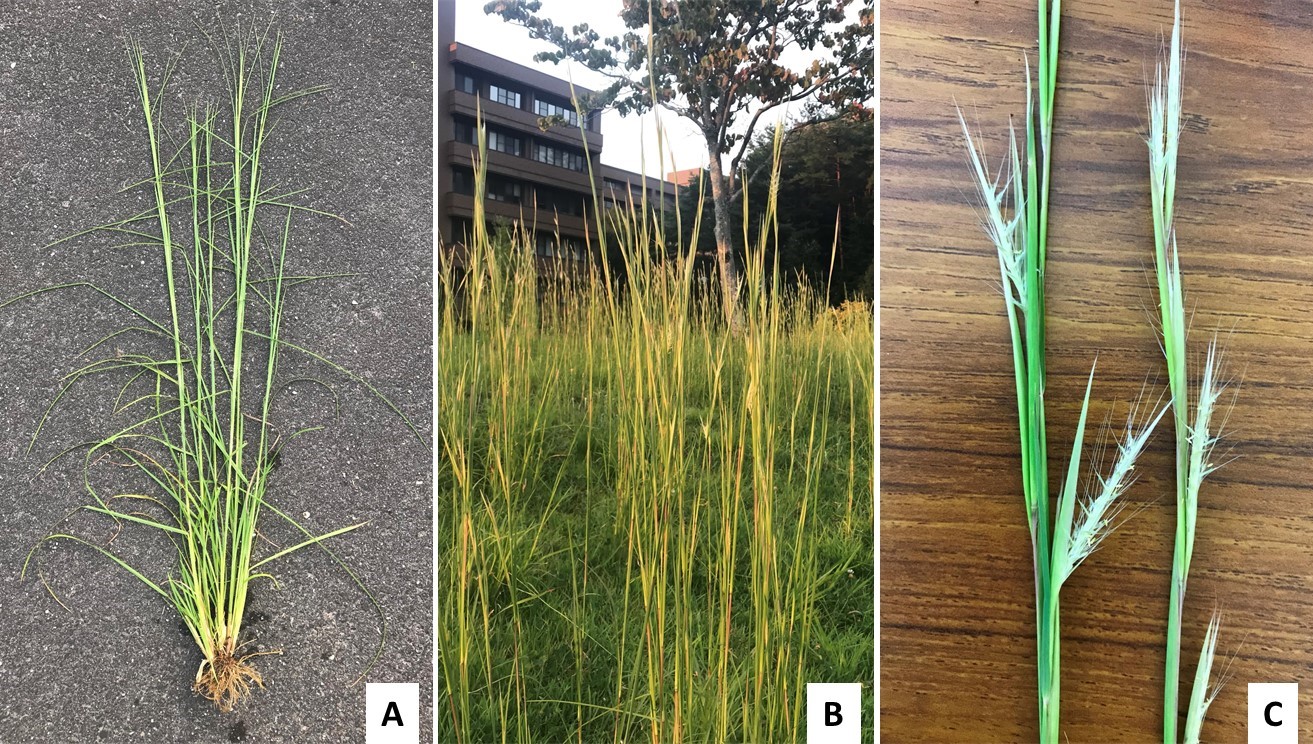Hiroshima University

Native to the southeastern United States, a weedy grass has spread northward to Canada and also made its way to Australia and Japan. Andropogon virginicus grows densely packed and up to seven feet tall, disrupting growth patterns of other plants and competing for resources. When burned, it grows back stronger. There is no way to effectively remove the weed once it has invaded. But there might be a way to use it to human advantage.
An international team of researchers has found that A. virginicus extracts appear to be effective against several human diseases, including diabetes and cancer. The results were published in a special issue of Plants last December.
“A. virginicus is an invasive weed that seriously threatens agricultural production and economics worldwide,” said paper author Tran Dang Xuan, associate professor at Hiroshima University’s Graduate School of Advanced Science and Engineering. “However, no solution efficiently utilizing and tackling this plant has been found yet.”
Researchers found high levels of flavonoids in the samples they extracted from the weed. These plant chemicals have significant antioxidant and anti-inflammatory properties, according to Xuan. When tested against a variety of cell lines, the extracted plant chemicals bonded to free radicals, preventing damage to the cells. At skin level, this helps prevent age spots by inhibiting a protein called tyrosinase. Among other, deeper healthful actions, this bonding also helps prevent knock-on cellular actions that can lead to type 2 diabetes.
The team also specifically applied the plant extracts to a line of chronic myelogenous leukemia, a rare blood cancer. The extract appeared to kill off the cancer cells.
Xuan said the researchers plan to establish a comprehensive process to isolate and purify the compounds responsible for known biological properties, as well as work to identify new uses. This story was first published on the Hiroshima University website.